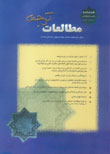First Steps in Collecting and Translating Iranian Folklore: A Case Study of Folktales and Folk Plays
Abstract
Folk literature which has been translated into Persian as ‘Adabiat-i ‘Ammeh and sometimes ‘Adabiat-i Tudeh is one of the most important parts of every nation's literature and a great manifestation of the worldview of its people. The set of beliefs and traditions which has been formed through centuries and is considered as a cultural treasure of a nation needs to be collected, recorded and translated carefully if it is going to become eternal and global. This important task has been done during past centuries by writers and translators. What seems to be ignored or does not receive an appropriate attention is a historical investigation into the works of these two groups. In this article, the investigators try to study in detail the first steps in translating the folktales and folk plays through a historical approach. At first, in order to clarify the concept which the investigators mean when discussing the translation of folk literature, different definitions of ‘Adabiat-i ‘Ammeh and its different categories are presented and discussed. Then, a historical investigation into translation of folk literature especially folktales and folk plays in Persian literature is discussed.Published
2016-01-20
How to Cite
Taebi Noghondari, Z., Nowruzy, A., & Khalighi, Y. (2016). First Steps in Collecting and Translating Iranian Folklore: A Case Study of Folktales and Folk Plays. Iranian Journal of Translation Studies, 13(52). Retrieved from https://journal.translationstudies.ir/ts/article/view/334
Issue
Section
Academic Research Paper
License
Copyright Licensee: Iranian Journal of Translation Studies. This article is an open access article distributed under the terms and conditions of the Creative Commons Attribution–NonCommercial 4.0 International (CC BY-NC 4.0 license).





